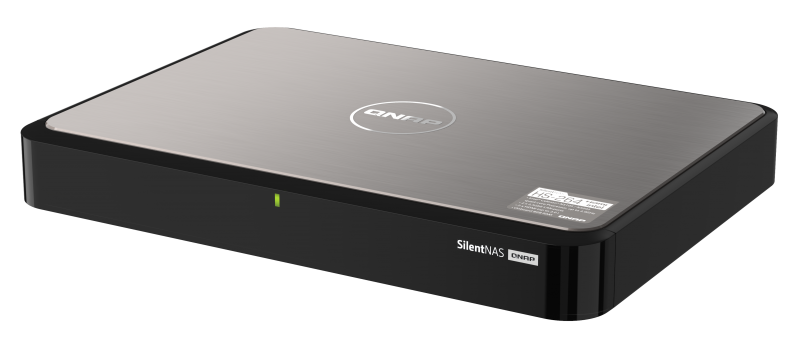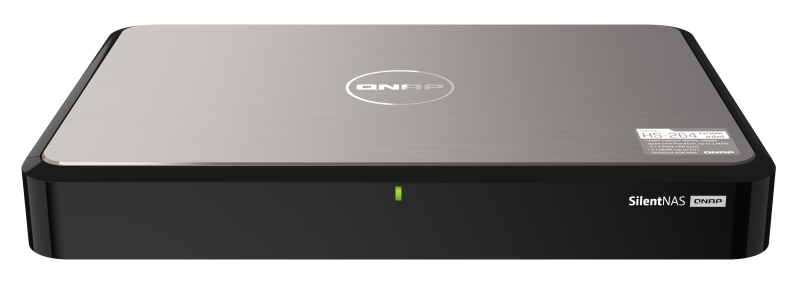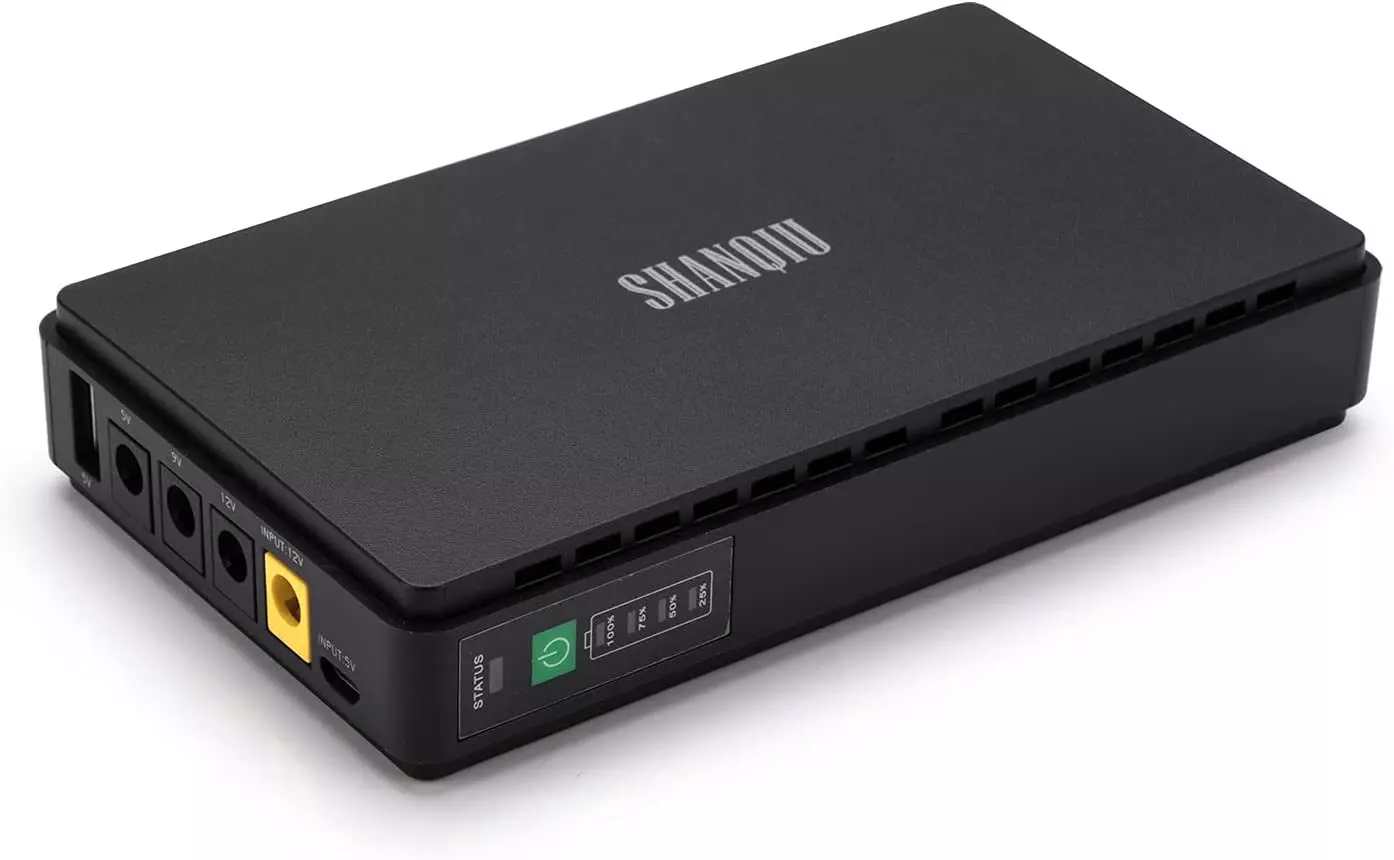
Main features
This new NAS server is aimed at a domestic environment where we want to enjoy multimedia content in 4K resolution, in addition, this model has a really compact design, so we can put it perfectly in our living room. Next, we are going to explain all the technical specifications of this very interesting model.
Processor and RAM
The main processor of this NAS is the Intel Celeron N5105, with a 64-bit x86 architecture. This processor is a Quad-Core at a speed of 2.0GHz but it is capable of reaching up to 2.9GHz speed in Turbo mode. It also incorporates AES-NI hardware encryption acceleration, this feature is essential if we want to achieve very good performance when we are using encrypted volumes or folders, with the aim of not having too high a processor consumption. In our tests, we have managed to transfer data from two computers to the NAS at a combined speed of 580MB/s, in a shared folder that is on an encrypted volume, and we only have 60% CPU occupied in this extreme case, so that performance is excellent. We should also point out that this AES-NI hardware encryption acceleration will allow us to use secure protocols such as FTPES or SFTP with the best possible performance, both in reading and writing. Finally, this processor also incorporates hardware accelerated transcodingthanks to the incorporation of an Intel UHD Graphics GPU we will be able to carry out transcoding tasks without having to put the main CPU at 100% as usual, in this way, we will be able to use Plex Media Server with movies in 4K without problems.
Regarding RAM memory, we have 8GB DDR4 SO-DIMM, but it is not expandable, that is, we will not be able to install additional RAM modules, because we simply only have one slot. Of course, we have the typical FLASH memory of 4GB in size that allows us to have dual-boot operating system protection.
drive bays
This compact NAS server has two bays to accommodate hard drives and SSD drives. The two bays use SATA3 interfaces, and they are compatible with 3.5” HDDs, 2.5” HDDs and also 2.5” SSDs, so we are going to have great versatility. In the event that we install hard drives, we must take into account the limitation in reading and writing them, in the case of having SSD drives, we will be able to squeeze the most out of the hardware of this NAS server, although logically we will have less capacity and they will be much more expensive than an equivalent hard drive in storage capacity.
It would have been desirable for QNAP to incorporate a pair of M.2 slots to install SSD drives and thus use them as SSD cache, in this way, we could install two high-capacity hard drives, and use the M.2 slots as SSD cache to achieve the best possible read and write performance.
connectivity
The connectivity of this home living room NAS server is really complete, below, you have all the available ports:
- 2 2.5G Multigigabit ports. These ports support speeds of 2.5Gbps, 1Gbps, 100Mbps and 10Mbps, in addition, it supports Link Aggregation and also Jumbo Frames at 9K size, to fully optimize the local network.
- 2 USB 3.2 Gen 2 ports at 10Gbps type A. These fast ports will allow us to make backup copies inside the NAS very quickly.
- 2 HDMI 2.0 outputs, allow a resolution of 4K at 60Hz, ideal for connecting to the TV.
As you can see, this NAS has all the connections that we consider essential today.
Other features
This QNAP HS-264 has dimensions of 41.3 × 302 × 220 mm, so it is really small, in addition, it weighs only 1.56 Kg. As for the consumption in sleep mode of the hard disk, it is around 11W, in the case of being in normal operation the consumption is about 25W.
This NAS also has a Kensington security slot to prevent theft, it has an internal speaker to “beep” when the NAS is rebooting or when something goes wrong, and we also support the RM-IR004 remote control to control it remotely. through the TV. We must bear in mind that this NAS can be connected to a TV in 4K resolution, so the logical thing is to have a remote control to control it, however, it does not come with the NAS itself, we have to buy it separately. However, you may be more interested in putting a keyboard and mouse, since it will recognize it perfectly, in our case we have used the Logitech MX keyboard and mouse and it has recognized it perfectly.
As you can see, this NAS is really interesting for home environments where we want to take advantage of multimedia capabilities, however, due to the hardware we will be able to use it to virtualize operating systems, install Docker containers and much more.
Unboxing, installation and speed tests
At RedesZone we have had the opportunity to have this new QNAP HS-264, a very interesting model for domestic environments where a NAS server with few bays but with a very compact size is needed, ideal for placing it directly in the living room.
We have recorded a complete video where you will be able to see the unboxing of this NAS, where we explain all the contents of the box and also the different ports of the server, in addition, we will explain step by step how to install and start up this equipment through its installation and configuration wizard via the web. Finally, we have carried out speed tests on a local network, where we have achieved a speed of up to 580MB/s via Samba, taking full advantage of the 2.5G Multigigabit connectivity (2 ports) that this model has, in addition, the performance of the USB port 3.2 Gen 2 has reached 770MB/s, a real outrage.
Soon we are going to show you how to turn this NAS server into a complete home automation management center, and we are going to be able to install Home Assistant in a really simple way, using Virtualization Station.





